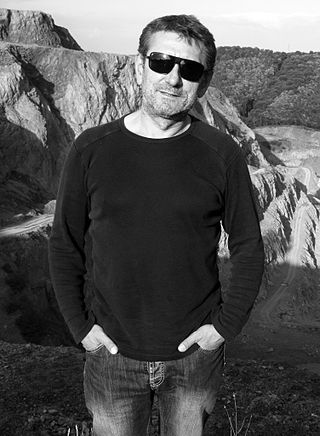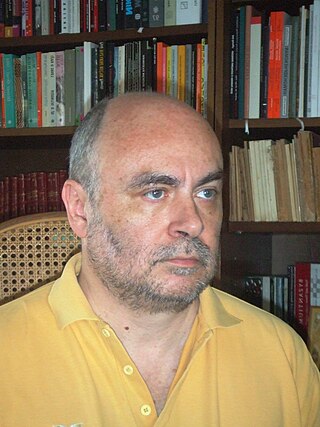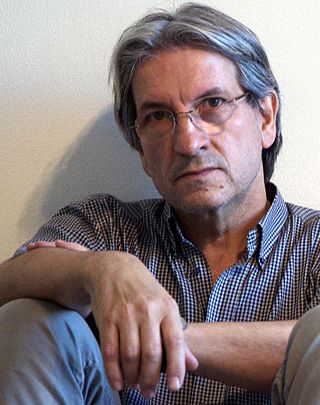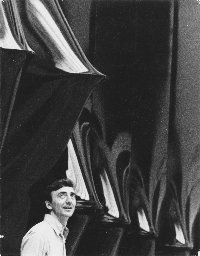
Edo Murtić was a painter from Croatia, best known for his lyrical abstraction and abstract expressionism style. He worked in a variety of media, including oil painting, gouache, graphic design, ceramics, mosaics, murals and theatrical set design. Murtić travelled and exhibited extensively in Europe and North America, gaining international recognition for his work, which can be found in museums, galleries and private collections worldwide. He was one of the founders of the group "March" (Mart) in 1956, and received many international awards. In 1958 Murtić participated in the three biggest events in the world of contemporary art: the Venice Biennale, the Carnegie Prize in Pittsburgh, and Documenta in Kassel. Interest in the art of Edo Murtić continues to grow, with retrospective exhibits in major museums.
Oton Gliha was a Croatian artist, born in Slovenia. A graduate of the Academy of fine Arts in Zagreb, Gliha continued his studies in Paris, Vienna and Munich. He is best known for his series of abstract paintings based on the patterns of the drystone walls of coastal Croatia. The first in the series appeared in 1954, and it was a theme he developed for the rest of his life.

Jannis Kounellis was a Greek Italian artist based in Rome. A key figure associated with Arte Povera, he studied at the Accademia di Belle Arti in Rome.

Petar Lubarda ; 27 July 1907 – 13 February 1974) was a Serbian painter.

Slobodan Peladić was a Serbian painter, sculptor and multimedia artist.
Milovan DeStil Marković is a Serbian visual artist, who began his career in the early 1980s. Active for over two decades, he is recently described as father of transfigurative painting and the text portrait. Visiting Professor Art in Context at the University of Arts, Berlin.

Zoran Mušič, baptised as Anton Zoran Musič, was a Slovene painter, printmaker, and draughtsman. He was the only painter of Slovene descent who managed to establish himself in the elite cultural circles of Italy and France, particularly Paris in the second half of the 20th century, where he lived for most of his later life. He painted landscapes, still lifes, portraits, and self-portraits, as well as scenes of horror from the Dachau concentration camp and vedute of Venice.
Gligor Stefanov is a sculptor and environmental installations artist, who lives in Windsor, Ontario, Canada.
The Marinko Sudac Collection, based in Zagreb, Croatia, has been created with a clear collecting strategy based on the region of Central and Eastern Europe, additionally spanning from the Baltic area to the Black Sea. The guiding principle of the Collection is systematic exploration, researching, and promotion of the avant-garde practices which have been marginalized, forbidden, and at times completely negated due to the historical, social and political circumstances. In this context, the Marinko Sudac Collection gives the most complete and comprehensive overview on the art of this region. The Collection starts at 1909, and it show the continuity from the first Avant-Gardes, through neo-avant-garde and New Artistic Practices, ending with the fall of the Berlin Wall. The global uniqueness of the Marinko Sudac Collection is also seen in the kind of media it contains. It contains not only traditional artworks, such as paintings, sculptures, and photographs, but it gives equal importance to documentary and archival material. Great importance is put on these almost forgotten media, which enable research of specific phenomena, artists and the socio-political situation which affected this type of art. The Collection contains a great number of museological units, and it treats the documentary and archival material on the same level as traditional artworks. By examining the units contained in the Marinko Sudac Collection, one can read not only the art scene or the art production of a certain artist, but the full status of the society, the socio-political atmosphere of the region in which this art was created in.

Jovan Despotović is a Serbian art historian and art critic who lives in Belgrade.

Ivan Kožarić was a Croatian artist who worked primarily with sculpture but also in a wide variety of media, including permanent and temporary sculptures, assemblages, proclamations, photographs, paintings, and installations. He lived and worked in Zagreb, Croatia.

Vjenceslav Richter was a Croatian architect. He was also known for his work in the fields of urbanism, sculpture, graphic arts, painting and stage design.
Herman Gvardjančič, is a Slovene painter.
Jerko "Ješa" Denegri is a Serbian art historian and art critic who lives in Belgrade, Serbia.

Slobodan Trajković is a Serbian visual artist. He began his career in the late 1970s. Lives in London and Belgrade.

Agostino Bonalumi was an Italian painter, draughtsman and sculptor.
Alex Da Corte is an American conceptual artist who works across a range of different media, including painting, sculpture, installation, performance, and video. His work explores the nuances of contemporary experience by layering inspirations from varied sources, drawing equally from popular culture and art history.
Mihajlo S. Petrov (1902-1983) was a Serbian-Yugoslavian avant-garde painter, graphic artist, illustrator, etcher, and art critic.
Petar Palaviccini or Palavicini was a Croatian sculptor of Italian ancestry.
Edita Schubert was a Croatian artist whose work includes painting, collage and installations.



















